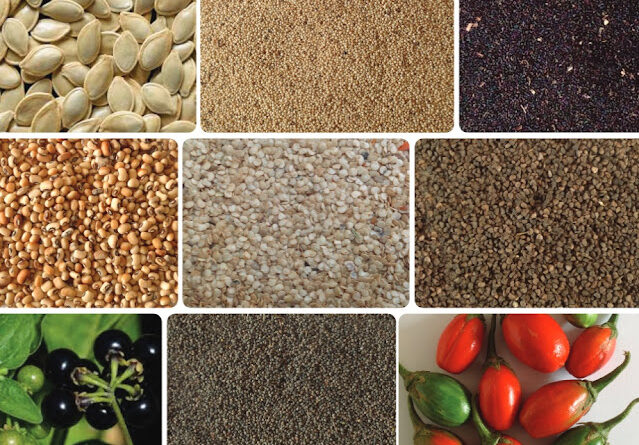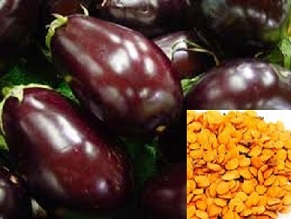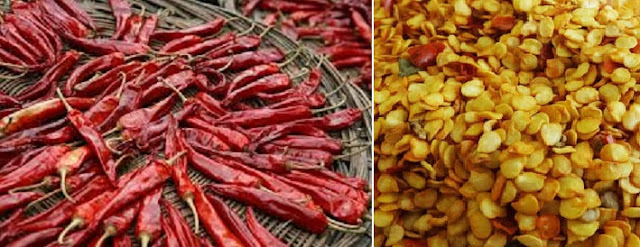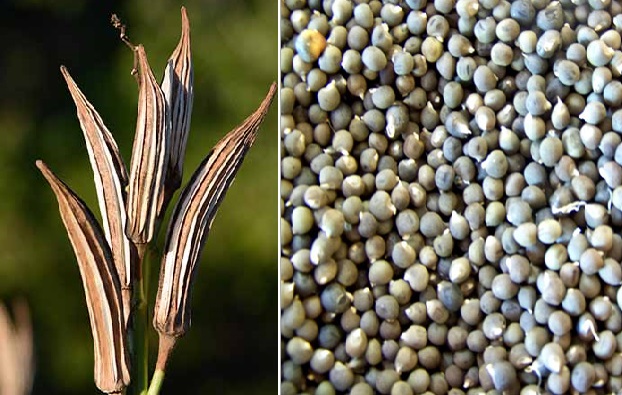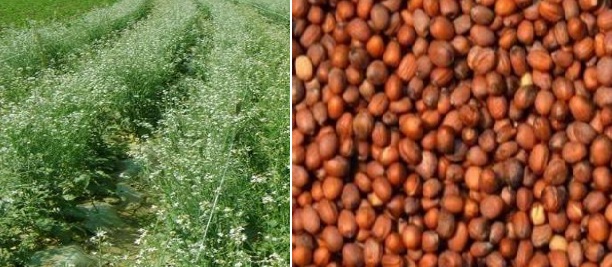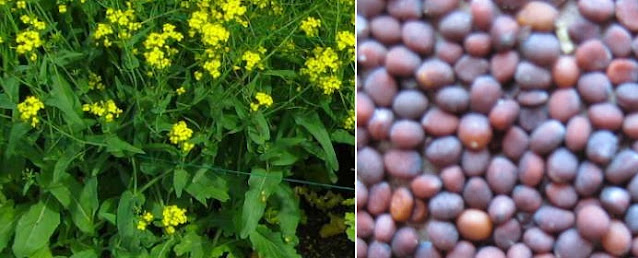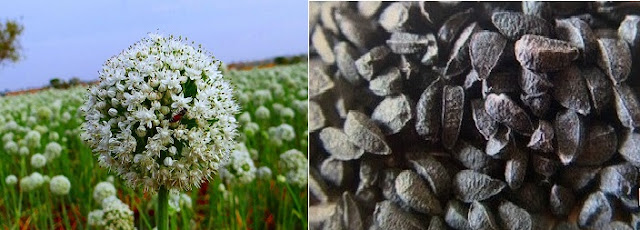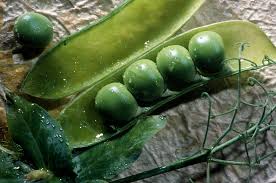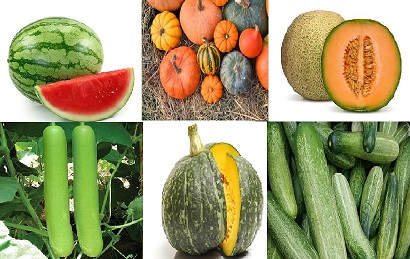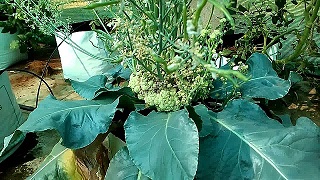Easy Steps to Produce Your Own Vegetable Seeds; A Information Guide for Beginners
Vegetable Seed Production is a very vast topic it can not be covered in a single article. Through this article, our aim is to provide a piece of basic information for beginners to Produce their own vegetable seeds for small-scale vegetable crop production for home consumption.
Important points must be considered before you make a plan for producing your own vegetable seed ;
1) Original Plant must be a standard variety and it should not be the crosses (Hybrids) Because seeds collected from the hybrid plants will not be true to their characteristics in the next generation
2) Use a single variety at a time because many closely related plants can cross if they’re grown near one another.
3) Collect the seed from the best plant which shows true to its characteristics.
Vegetable Seed Production
Seeds are the protectors and propagators of their kind. The seed may be defined as “a fertilized ovule consisting of an intact embryo, stored food, and seed coat which is viable and has got the capacity to germinate”.
Characteristics of Good Seed
1) High Genetic Purity ie seed should be true to type.
2) High Physical Purity ie seed should be, healthy, and free from inert materials and weed seeds.
3) High Yield Potential & adaptability.
3) High Germination percentage ie the seed should possess high vitality.
5) It should be free from seed-borne diseases and insect pests.
6) Seed should have Optimum Moisture Content
7) The seed should be uniform in its texture, structure, and color.
8) The seed should be as fresh as possible or of proper age.
9) The seed must have a higher Market Value.
1. Seed production of Fruit Vegetable
A) Steps Required for Brinjal Seeds Production.
1)The fruits are allowed to ripen on the plants.
2) The fully ripe fruits are harvested and cut into the pieces
3) Add some water to Cut pieces that are kept for some days in cool places for fermentation.
4) Now, the seeds are separated from the pulp
5)The healthy seed should then be dried in partial shade before storing.
6) 2-3 kg of Brinjal seeds can be obtained from a one-hectare brinjal crop
B) Steps Required for Tomato Seeds Production.
1) The recommended varieties from which seeds are to be extracted are grown at an isolation distance of 25 to 60 meters depending upon the type of seed to be produced.
2) Fully ripe fruits are harvested from the selected varieties. The seed along with the pulp is left in a wooden container to ferment for two to three days before extraction.
3) The seed is then extracted by vigorous stirring and washing. The acid and alkali method is now used to avoid handling the fermented material.
4) The acid method is more common. 100 ml of commercial hydrochloric acid (HCl) is thoroughly mixed and stirred for every 11 kg of pulp and left for about 30 minutes.
5) The pulp is then again stirred and the seed is washed.
6) The quantity of fruit required to produce 1 kg of tomato seed varies from 160-210 kg depending on the variety.
7) On average 100-150 kg/ha tomato seed can be obtained.
C) Steps Required for Chilli and Capsicum Seeds Production.
1)Chilies and Capsicum are cross-pollinated to some extent. It is essential to keep an isolation distance of 200 meters between the two varieties.
2)The fully ripe fruits are harvested and dried in the sun for 10 to 12 days depending on the variety and intensity of the sun. It can also be dried in an oven at a temperature of 54-degree Celsius for 2 to 3 days
3)The dried fruits are stored in an airtight container. The fruits are removed from them, broken, and then the seeds are extracted before sowing.
4) On average about 200-300 kg/ha of seeds in chili and about 100-150 kg/ha of seeds in capsicum can be obtained.
D) Steps Required for Okra Seeds Production.
1)The okra fruits are harvested when they become dry on the plant.
2) Care should be taken to harvest the fruits before splitting starts at the ridges on the pods. If splitting takes place the seeds become exposed which affects their quality.
3)The seeds are taken out from the pods by opening the dried pods.
4) The seeds are dried to a specified moisture level, cleaned, treated, and stored. For one-year storage, 21oC temperature and 12% humidity should be maintained.
5) A hectare of okra crop gives about 1000-1200 kg seeds/ha.
2. Seed production of Root Vegetable
A) Steps Required for Radish Seeds Production
1)Radish is a cross-pollinated crop and pollination is done by the honey bee. The seed is produced in situ method or transplanting method.
2)The best roots that are true to the type are selected from the main crop in November and transplanted after cutting away about three-fourths of the lower portion.
3)The top leaves are then trimmed without injuring the crown. These are planted in fertile soil in December at 90 cm row to row and 15-20 cm plant to plant.
4)The field is then irrigated after planting and subsequent irrigations are given at an interval of 7 to 10 days, till the seeds are formed in the fruits.
5)The seeds are ready in April.
6)The crop is harvested before the pod gets dried completely and the plants are dried in the open.
7) When they are completely dried, seeds are then separated from them, seived, graded, and stored for the next sowing in the next session though plants in situ yield less than the transplanted ones, yet they flower early in the former case than in the later.
8) A hectare of radish seed crop yields 600-1000 kg of seed.
B) Steps Required for Turnip Seeds Production
1)The seed is sown from August to September for seed production.
2)The fully developed roots are uprooted and retransplanted after removing the tops in autumn at a distance of 60 x 60 cm. 3)The land is irrigated at regular intervals.
4)The plants are harvested when 60 to 70 percent of them turn yellowish-brown in color.
5)The plants are dried in sum and the seeds are then separated from them. The seeds are stored in an airtight container after drying them for four to five days in the sun.
6) About 500-600 kg seeds/ha can be obtained from a turnip. While about 400 -500 kg of seeds can be obtained from a one-hectare crop
Note; The seed production of carrots and beet is the same as that for radish.
3.Seed production of Bulb Crops;
A) Steps Required for Onion Seeds Production
1)The onion is mainly a cross-pollinated crop.
2)The seed is produced by bulb to seed method and seed-to-seed method.
3) Medium-sized bulbs are selected for planting for seed production.
4)The bulbs are planted by the first fortnight of October at a spacing of 45 x 30 cm.
5) In the case of the seed to seed method. Seeds are sown in August in the nursery bed and the seedlings are transplanted in September in the main field.
6) During harvesting and curing of the seed fairly high temperatures and low humidity is desirable.
7)The seed head, in which seeds are just ready to shatter, is harvested and dried in the sun and then threshed by hand,
sieved graded, and stored for the next sowing in the next session.
8) The moisture content should not be more than 6-8 %
9) Seed yield is 850 – 1000 kg/ha.
4.Seed production of Legume Vegetables
1) Legumes are self-pollinated crop seeds.
2) Once collected from pure varieties will breed true to type. For stock seed production,
3)roughing is a compulsory operation.
4)The fully ripe and dried fruits are harvested and dried in the sun for four to five days.
5)Then the seeds are separated from the fruits and dried in the sun and stored in an airtight container.
6) On average, from a hectare of seed crop about 1000-1500 kg pea, 800-1000 kg French bean, 600-800 kg cowpea, Dolichos bean, and 700 kg cluster bean seeds can be obtained.
5.Seed production of Cucurbits Vegetables;
1)The cucurbits are a cross-pollinated crop. The fully ripe fruits are harvested and kept for some days.
2) In watermelon, pumpkin, etc. seeds are embedded in the pulp, and these different methods are applied for seed extraction.
a) Mechanical methods – In this method machines like Axial Flow Vegetable Seed Extractor are used to separate out the pulp from seeds.
b) Chemical methods – In this method commercial HCl is used to separate the pulp from seeds within 15-20 minutes.
Thereafter the seeds are washed in water and dried to the prescribed moisture levels.
3)The seeds are collected from the fruits and -dried in the sun. Then the seeds are stored in an airtight container.
4) From a hectare of seed crop, 300-500 kg bottle gourd seeds, 100-300 kg bitter gourd seeds, 300-400 kg Luffa, pumpkin, cucumber & round melon seeds, 200-300 kg muskmelon seeds, and 400-500 kg watermelon seeds can be obtained.
6. Seed production of Cole Crops Vegetables;
1) Cole crop vegetables produce seeds freely. The plants are allowed to grow freely for seed production.
2) The plants are harvested when the fruits are fully ripening and dried in the sun.
3)The seeds are collected by threshing the plant with a hand.
4)The seeds are stored in an airtight container after drying in the sun for four to five days.
5) On average, seed yields of 300-400 kg/ha from cauliflower, 400-500 kg/ha from cabbage, and about 400 kg/ha of knol- khol can be obtained.
Explore Further ;

